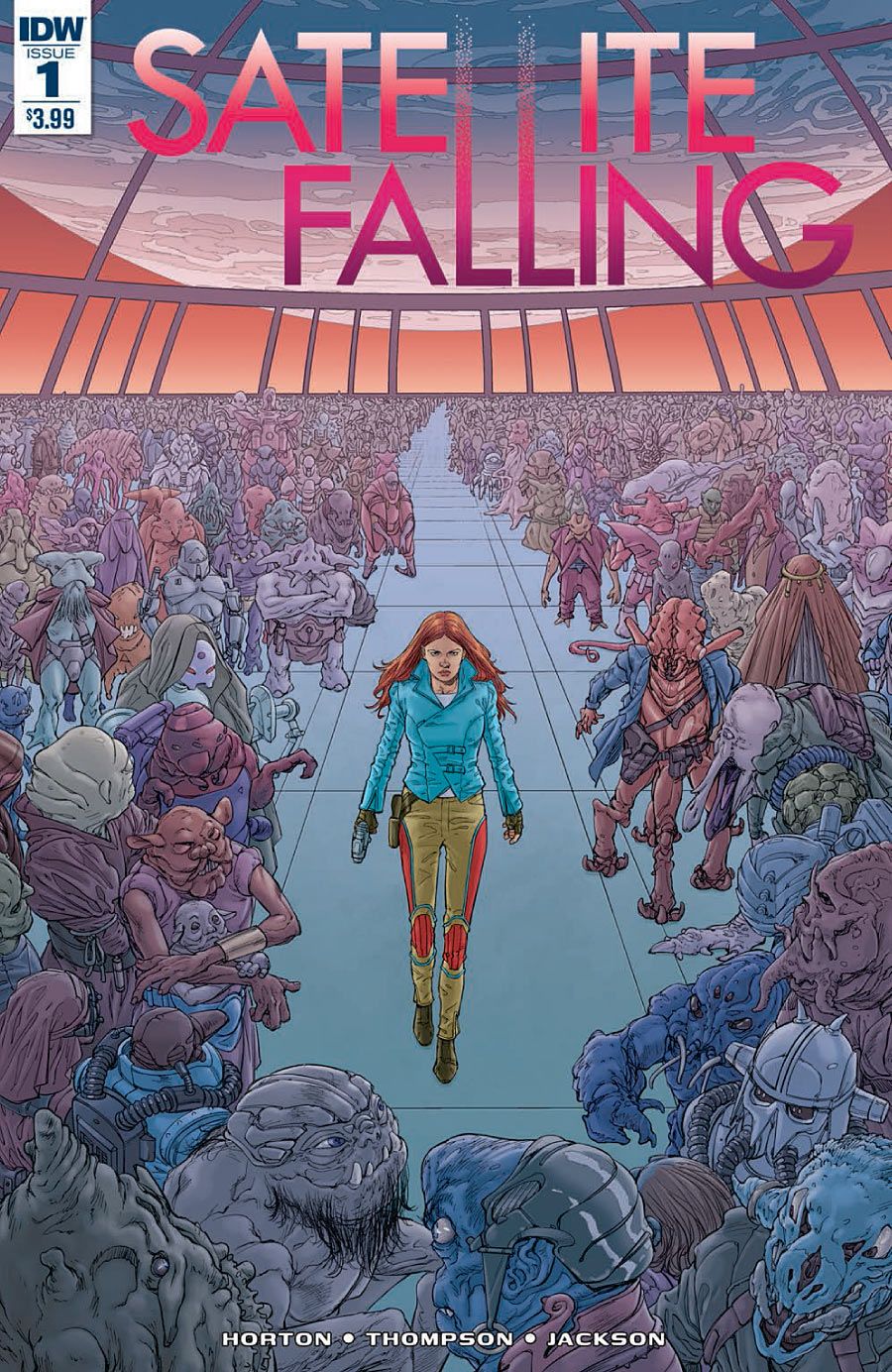Steve Horton and Stephen Thompson focus on human emotions against a beautiful sci-fi backdrop in "Satellite Falling" #1, an impressive space opera with an approachable lead, a fascinating setting and constant surprises. An artificial construct simply named Satellite hovers above the Earth and has become the new home for Lilly, a part-time cab driver whose other job is far more dangerous. As she tries to mend from a failed relationship, she buries herself in her work, where she faces additional challenges, both to her skills and her ethics.
Horton and Thompson grab the reader on the very first page; Thompson does so with his unique and beautifully detailed rendering of Satellite, a jagged yet pristine mechanical space station with both technological and organic characteristics, while Horton immediately introduces readers to Lilly with an internal monologue that reveals her current state of mind. Thompson painstakingly details every single aspect of Horton's story, from skylines to vehicles to even the most mundane minutiae, such as the interior of Lilly's futuristic taxi.
There's a hi-def splendor that will not only win readers over on page one, but continue to wow them through the entirety of the issue. Perhaps most impressive of all is the priceless expression on Lilly's face in her first appearance; despite the hi-tech confines of her job, she clearly acknowledges driving a taxi can be a pretty boring profession without uttering a word. Colorist Lisa Jackson delivers the same kind of splendor throughout the issue as well; her tones help contrast Thompson's tight lines, making every page shine brightly, but not garishly. It's not only Thompson's detail that electrifies, but also his panel structure; a stark, sudden transition hammers home the emotional void Lilly feels, punctuating Horton's concise but revealing narration and establishing her character quickly and convincingly enough to allow him to get right to the meat of his story.
Horton's story doesn't settle into any kind of comfortable flow, though; instead, he continues to surprise by revealing Lilly's true job, one that's far more exciting than driving aliens around a space station. The transition gives Thompson more opportunity to amaze as well; his bright, airy skies give way to a darker, grimier street-level setting, and he even changes his line style in a couple of panels to evoke a sense of grittiness. Thompson's diverse array of aliens is worthy of a "Star Wars" watering hole; his visuals and Horton's story are clearly influenced by the iconic space opera, and in all the right ways, at that. Thompson's gender-switching changeling takes the concept to a level that a PG-rated film couldn't allow. For instance, one of Lilly's comments is brilliant in its ambiguity.
Thompson's world-building isn't solely influenced by "Star Wars," though; there are a number of other sci-fi nods, among them "Blade Runner" and perhaps even "Back to the Future." He doesn't blatantly swipe from these franchises, but instead applies the influences in broad strokes, and -- in doing so -- creates a fresh world of his own that becomes a rich backdrop for Horton's story. In fact, the blended atmosphere is more evocative of the kind of environments seen in European sci-fi graphic novels: grounded and extrapolated from reality, with a touch of the surreal.
Horton ensures that Lilly's character continues to stay fresh; her conscience comes into play near the end of the issue, something that makes for another twist that is yet another selling point for issue #2. Dynamic storytelling keeps the comic fresh and unpredictable, with stunningly constructed art to boot. "Satellite Falling" #1 is a genuine example of storytelling excellence in comics, one that uses its influences to create something refreshing.

